Lexar NM800 Pro with Heatsink 2TB NVMe SSD Review
We didn’t get a chance to test the NM800 Pro before Lexar added the sink and we won’t be looking back by doing that today: All we really want to know is if this $185 drive can keep up with $200 drives to produce a value win!
| Lexar NM800 Pro with Heatsink p/n LNM800P002T | |||
| Form Factor | M.2 2280 | Controller | InnoGrit IG55236 |
| Capacity | 2.0TB | Flash | Micron 176L TLC (B47R) |
| Interface | PCIe 4.0 x4 (NVMe 1.4) | Cache | 2GB DDR4-2400 |
| Max Sequential Read | Up to 7600 MBps | 4KB Random Read | Up to 1,300,000 IOPS |
| Max Sequential Write | Up to 6500 MBps | 4KB Random Write | Up to 1,200,000 IOPS |
| Endurance | 2000 TBW | Warranty | 5-years |
Get it at Amazon

(click for availability)
Lexar’s part number LNM800P002T drive arrived with nothing more than an oversized retail box and a warranty card, but that’s all that we needed: The 7500MB/s tells the rest of the story (or does it?)

The drive is nothing less than a regular NM800 Pro with a standard clamp-on heat sink that’s been customized only by adding the Lexar logo. The raised bar behind the logo extends the thickness 0.3mm beyond the 10mm frame, and thermal pads containing silicon oil transfer the heat.

Under the sink is a standard NM800 drive, complete with a foil-backed logo sheet that would have functioned as a heat spreader even before adding the heat sink. The difference between this unmasked drive and a retail-boxed non-heatsink drive is that this one has no sticker on the back, since the S/N sticker was instead placed on the back of the heat sink. With no sticker to protect it, the PCB mask appears to have absorbed some of the silicon oil (click to enlarge).
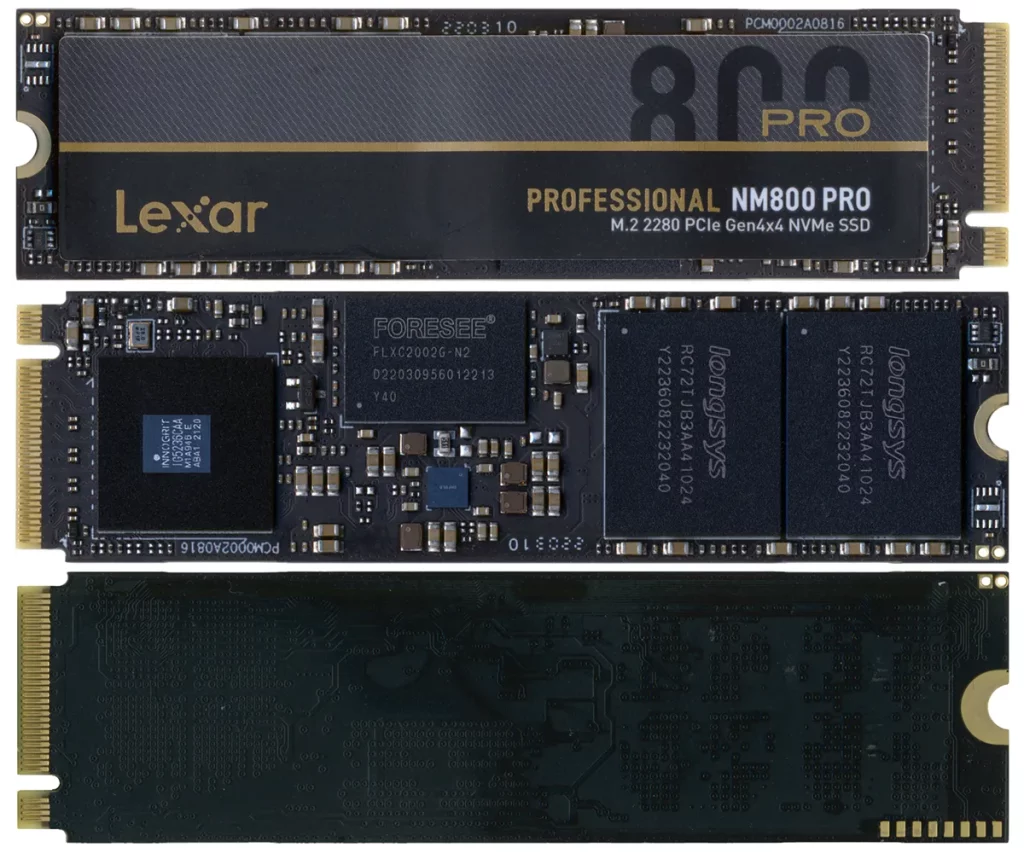
You probably wanted a description of those chips, but apart from the InnoGrit IG55236 these ICs have been scrubbed and re-branded. We’re told that the Longsys RC72TJB3AA41024 labels hide a pair of Micro 1TB B47R ICs and that Foresee FLXC2002G-N2 hides a 2GB DDR4 cache chip that’s likely also made by Micron, but Longsys (the actual owner of Foresee/Lexar) obviously doesn’t want to give up its secrets. Having said that, Lexar’s 2000 TBW endurance rating exceeds even the best 2TB drives we’ve previously tested by 42.8%, making it more likely that the 5-year warranty will still be redeemable in nearly five years.
| Test Hardware | |
| CPU | Intel Core i9-12900K, Fixed at 4.8/4.0GHz, 1.275V |
| CPU Cooler | Alphacool Eisblock XPX CPU, VPP655 with Eisbecher D5 150mm, NexXxoS UT60 X-Flow |
| Motherboard | ASRock Z690 Taichi LGA 1700 |
| Graphics | Gigabyte GeForce RTX 2070 Gaming OC 8G: 1410-1725 MHz GPU, GDDR6 |
| Power | be quiet! Dark Power Pro 10 850W: ATX12V v2.3, EPS12V, 80 PLUS Platinum |
| Memory | Patriot Viper Venom RGB DDR5-6200 C40 2x 16GB (32GB) Kit |
| Sound | Integrated HD Audio |
| Network | Integrated Wi-Fi |
| Graphics Driver | GeForce 496.49 |
Benchmark Results
The NM800 Pro beats all commers by a wide margin in Sandra’s storage score and bandwidth, yet falls just as far behind in AIDA64 Linear Read. We’re not sure where to place it?
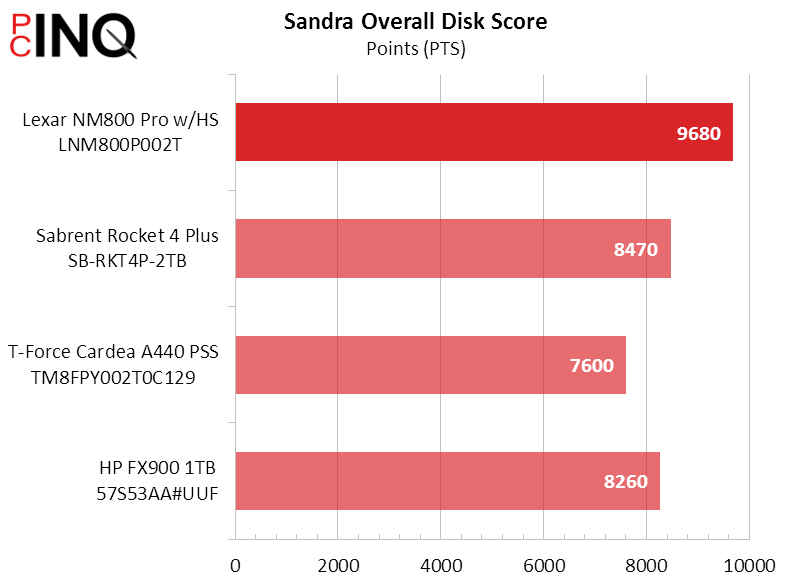
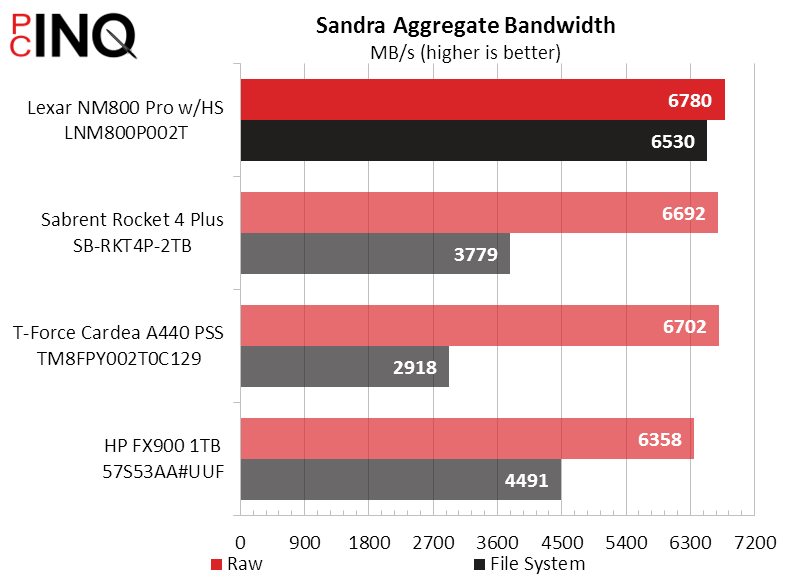
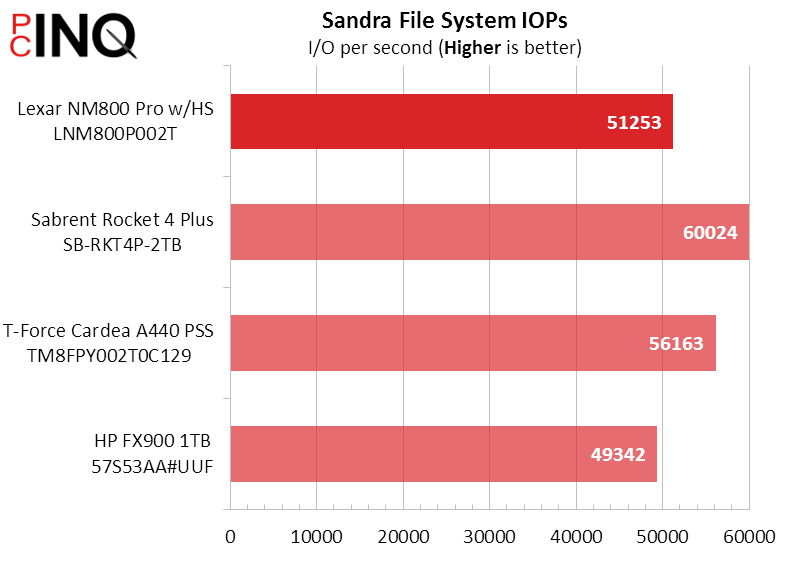
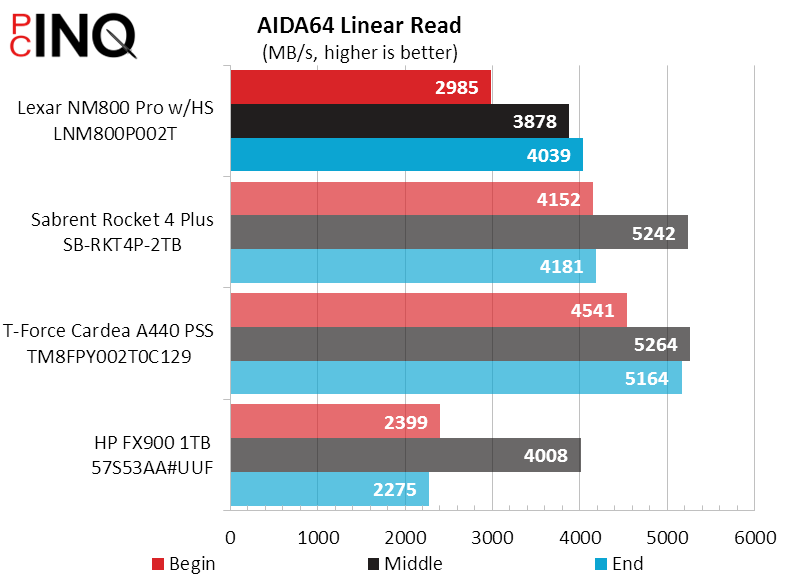


The NM800 Pro falls to second place in 3DMark’s overall score and in PCMark’s quick test, and falls even farther to third place in PCMark’s full test.
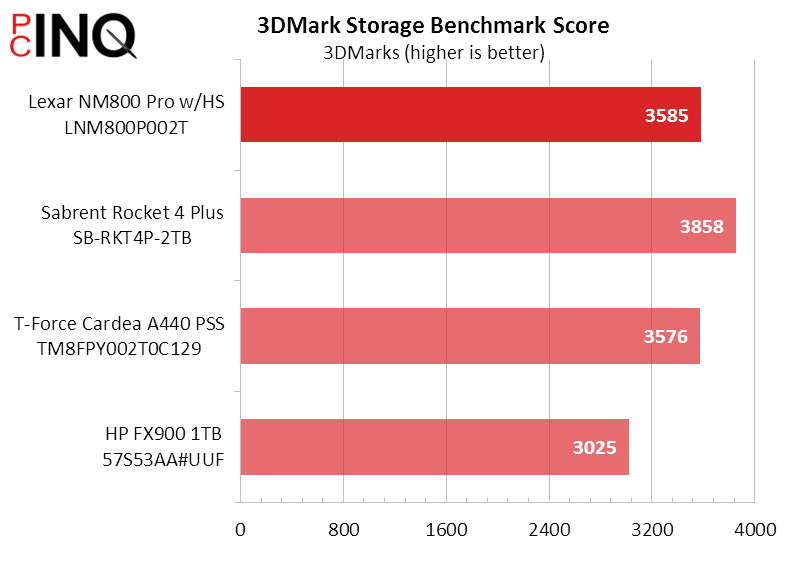


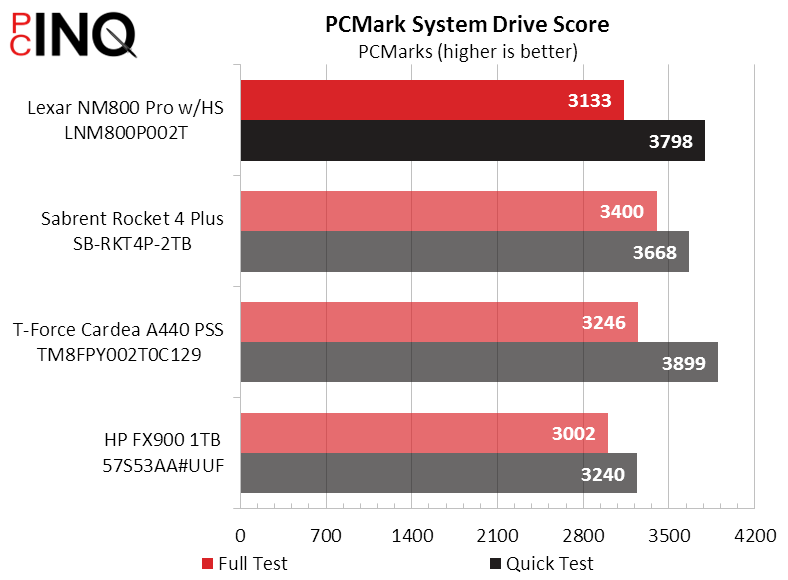
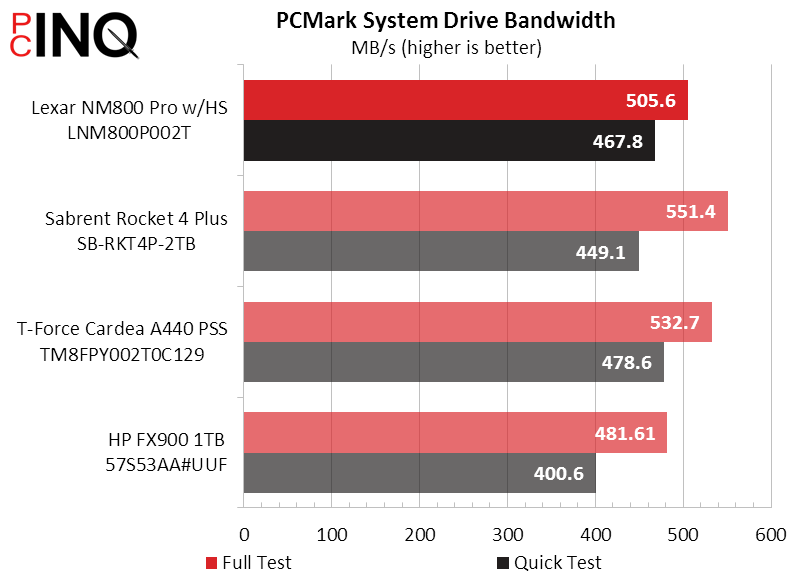
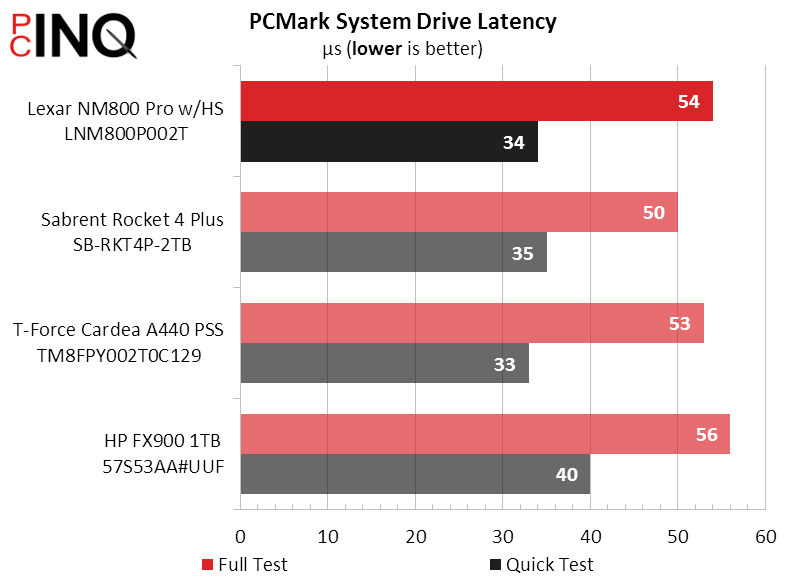
The NM800 Pro’s write speeds are fine in ATTO, but its reads are through the floor and we really can’t figure out why. IOPs are fine, and the drive even pulled a big win in this metric when testing sequential 4K transfers.
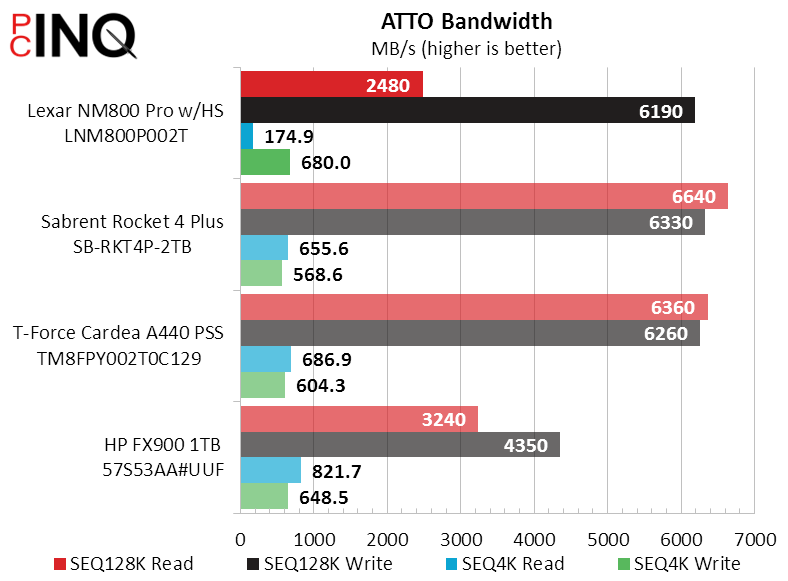
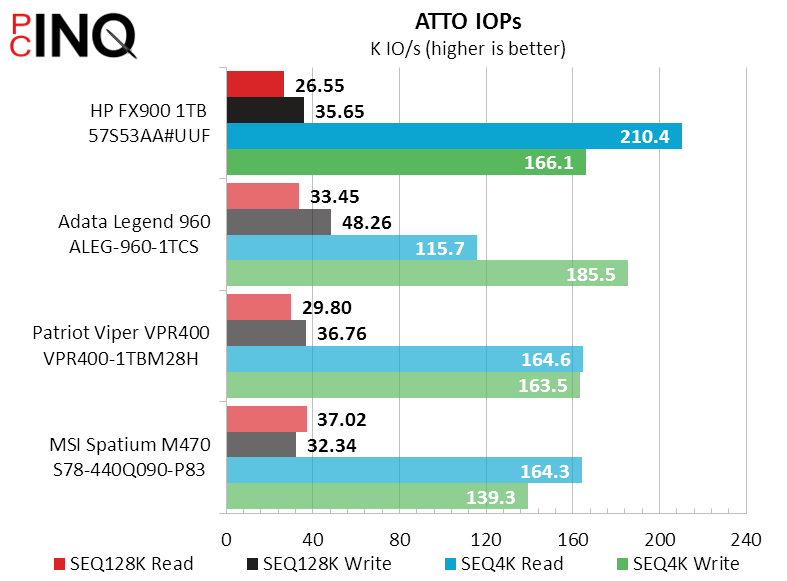
CrystalDiskMark loves the NM800 Pro and even pushes it close to its rated 7500MB/s peak, beating both the Rocket 4 Plus and Cardea A440 in three out of four bandwidth measurements. IOPs are through the ceiling, once again forcing us to re-scale our chart just to show the NM800 Pro’s full advantage.
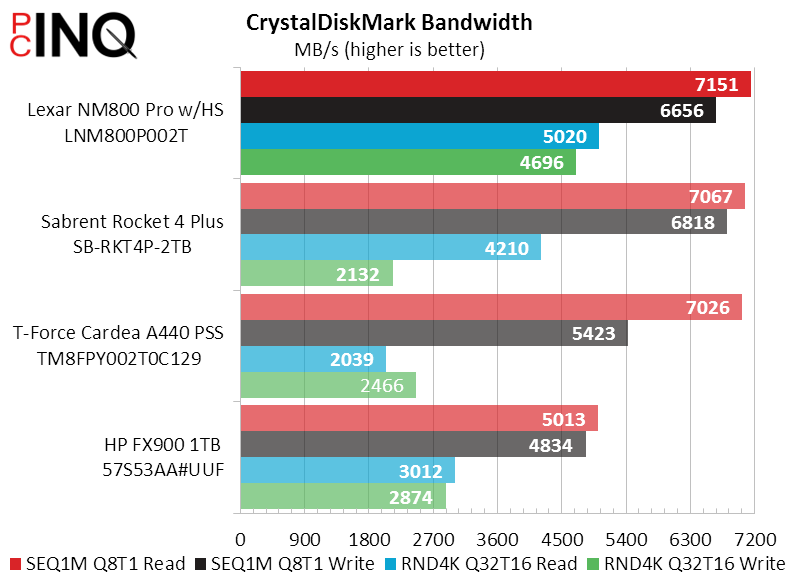

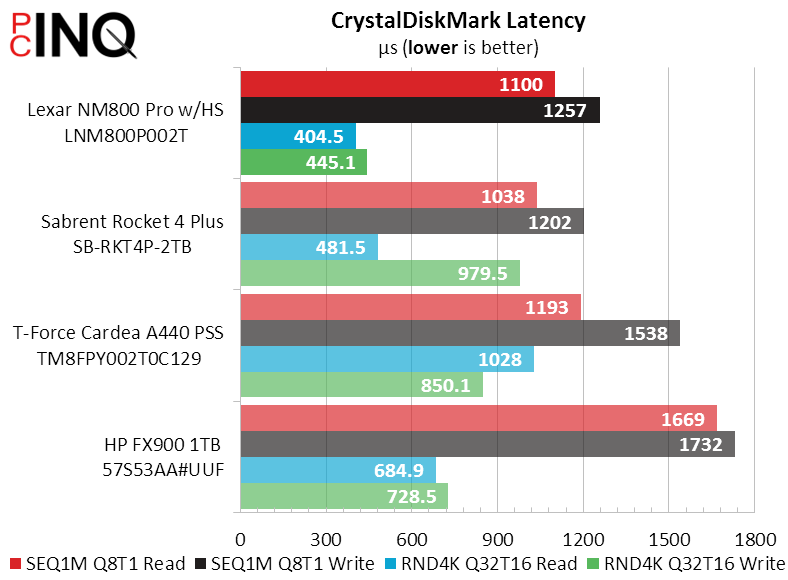
DiskBench measured only continuous transfers, and it shows the NM800 Pro falling a bit behind the Rocket 4 Plus and Cardea A440. We’re starting to wonder if the drive’s cache might be driving some of its weird results?

A look back at the NM800 Pro’s biggest wins shows that they were associated with each benchmark’s smallest transfers. That sounds a lot like cache effect to us, and indeed the NM800 Pro’s 2GB IC has twice the capacity of the Sabrent drive’s SK Hynix H5AN8G6NCJ (rated in gigabits, its 8Gb equals 1GB).
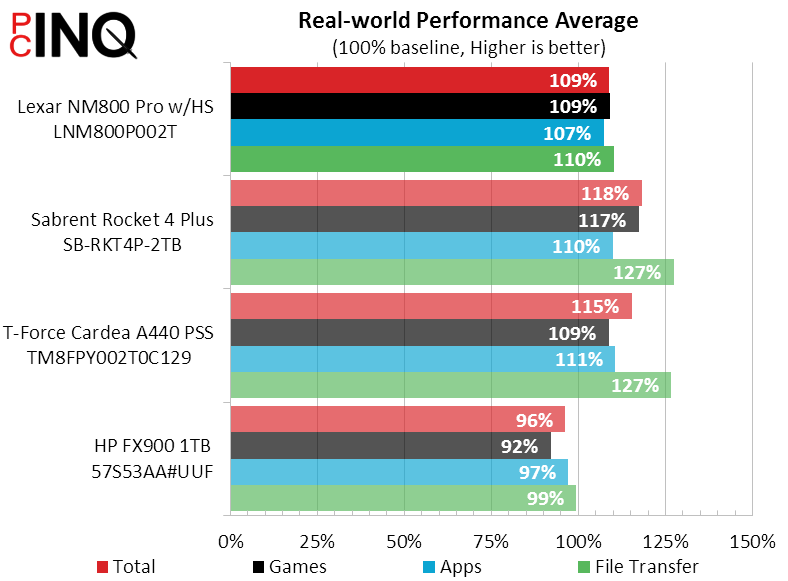
We’re not exactly sure where that leaves the NM800 Pro in overall performance since it appears to be a slightly slower drive boosted by a larger cache IC. That larger cache IC is certainly going to be useful for those whose use case focusses almost entirely on tiny transfers, but the drive comes in behind its competitors in synthesized real-world games and apps as well as basic storage tasks. We’d love to hear your take in the comments section below!
| Lexar NM800 Pro with Heatsink p/n LNM800P002T | |
| Pros | Cons |
|
|
| The Verdict | |
| While the NM800 Pro’s extra cache boosted it through a few benchmarks, value come primarily from its higher TBW rating | |
Get it at Amazon

(click for availability)
Whether or not the NM800 Pro with Heatsink deserves an award for its higher durability rating is a matter of debate: Many people have already told us that the 1400 TBW of its competitors far exceeds most real world use scenarios, but for anyone who doesn’t fit within those scenarios, the higher rating means less chance of the drive being rejected from a warranty claim for over-use. Once again, we’d love to hear your thoughts in the comments section below!
